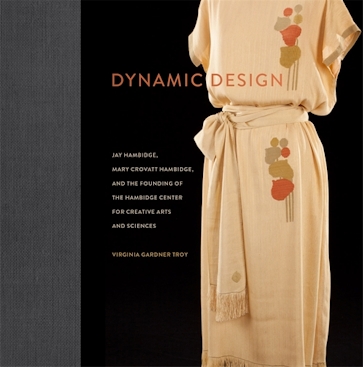Dynamic Design
Jay Hambidge, Mary Crovatt Hambidge, and the Founding of the Hambidge Center for Creative Arts and Sciences
Title Details
Pages: 176
Illustrations: 130 color and b&w images
Trim size: 10.000in x 10.000in
Formats
Hardcover
Pub Date: 01/15/2023
ISBN: 9-780-8203-6272-4
List Price: $39.95
eBook
Pub Date: 01/15/2023
ISBN: 9-780-8203-5741-6
List Price: $39.95
Subsidies and Partnerships
A copublication of Georgia Humanities and the University of Georgia Press
Published with the generous support of Berry College
Related Subjects
BIOGRAPHY & AUTOBIOGRAPHY / Artists, Architects, Photographers
Dynamic Design
Jay Hambidge, Mary Crovatt Hambidge, and the Founding of the Hambidge Center for Creative Arts and Sciences
One couple’s extensive contributions to twentieth-century art and cultural history
Skip to
- Description
- Reviews
- Awards
- Contributors
Mary Crovatt Hambidge (1885–1973) was an aspiring actress and a professional whistler on Broadway when she met Canadian-born Jay Hambidge (1867–1924), an artist, illustrator, and scholar. Their relationship would prove to be both a romantic and an artistic partnership. Jay Hambidge formulated his own artistic concept, known as Dynamic Symmetry, which stipulated that the compositional rules found in nature’s symmetry should be applied to the creation of art. Mary Hambidge pioneered new techniques of weaving and dyeing fabric that merged Greek methods with Appalachian weaving and spinning traditions. The Hambidge Center for Creative Arts and Sciences, formed during the mid-1930s, provides an artists’ community situated on six hundred rural acres in the north Georgia mountains where hundreds of visual artists, writers, potters, composers, dancers, and other artists have pursued their crafts.
Dynamic Design details Jay Hambidge and Mary Crovatt Hambidge’s cross-cultural and cross-historical explorations and examines their lasting contributions to twentieth-century art and cultural history. Virginia Gardner Troy illustrates how Jay and Mary were important independently and collectively, providing a wider understanding of their lives within the larger context of late nineteenth- and early twentieth-century art and design. They were from two different worlds, nearly a generation apart in age, and only together for ten years, but their lives intertwined at a pivotal moment in their development. They shared parallel goals to establish a place where they could integrate the arts and crafts around the principles of Dynamic Symmetry.
Troy explores how this dynamic duo’s ideas and artistic expressions have resonated with admirers throughout the decades and reflect the trends and complexities of American culture through various waves of cosmopolitanism, utopianism, nationalism, and isolationism. The Hambidges’ prolific partnership and forward-thinking vision continue to aid and inspire generations of aspiring artists and artisans.
—Rosemary McGee, director emerita of the Stuart A. Rose Manuscript, Archives, and Rare Book Library at Emory University
—Marie Frank, author of Denman Ross and American Design Theory
—Jamie Badoud, executive director, Hambidge Center for the Creative Arts and Sciences
Winner
Award for Excellence in Documenting Georgia's History, Georgia Historical Records Advisory Council
Donna Mintz
Tommye McClure Scanlin



